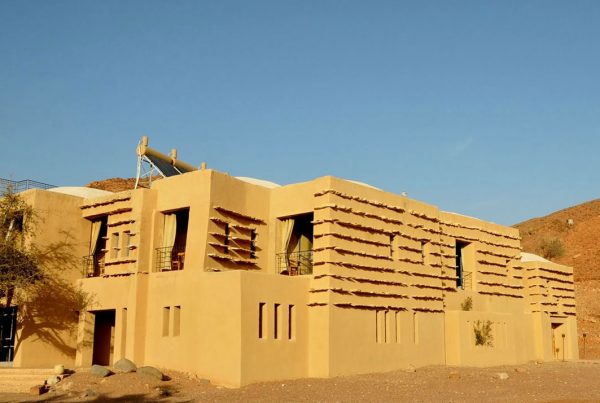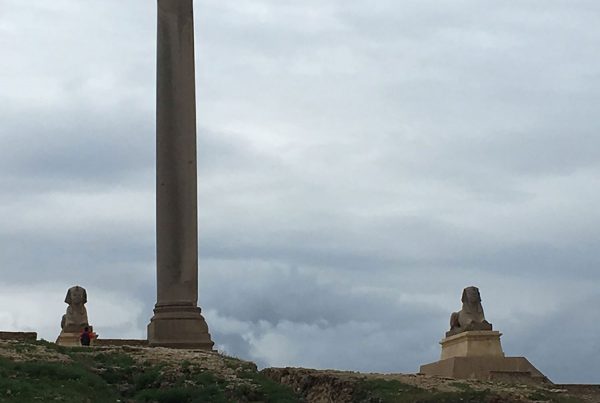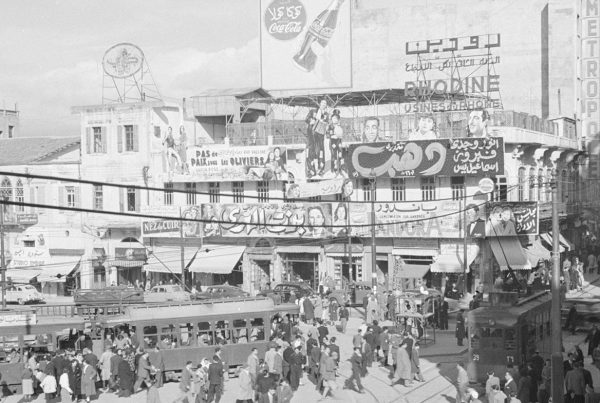In recent years, the adoption of the concept of green architecture became of important influence in Europe, North America, and East Asia. The expression of a positive reaction to the concerns of climate change and population growth became a great interest among various institutions, due to the realization that modern development is no longer sustainable and it has many negative consequences on the natural environment. Nevertheless, when trying to adopt a sustainable approach, Egyptian architects tend to follow the western model without adapting it to society’s environmental conditions. The question remains about the real motive behind the sustainable design, is it really for environmental purposes or it is a superfluous tool to gain some status? Is it possible to create a suitable model that can be beneficial to Egyptian society giving the available architectural and technical capabilities?

Summary of the principal events that affected the architectural character in Egypt by Hend Abdelrazek
Rendering the numerous ideologies that Egyptian society has endorsed, it can be said that the current architectural character and urban tissue is the product of prevailing social movements (see the attached diagram). The growing phenomenon of globalization of architecture in Egypt is associated with the entry of transnational companies as a result of the domination of the free economy over the country. Following modern trade agreements has encouraged the free transfer of capital between countries. According to Eng. Selim (2011), assistant professor at Al-Azhar University, has led Egyptian architects to pursue modern and global architecture styles believing that it represents a technological advancement. Currently, architects have a dominant idea which is the achievement in architectural production. Their main concern is to produce astonishing results that satisfy the client regardless of their environmental effects. This tendency has generated many replicated structures that imitate forms without trying to rephrase the concepts in order to achieve optimum efficiency of buildings regarding the environmental and climactic perspectives. These poor imitations lack as well the relevance to the local character and culture that distinguish each community from the other.
Architectural imitations do not only involve forms but also modern technologies. Technological advancement is seen as the practical progress which expresses itself in the use of novel materials and advanced structures. However, its comprehensive concept is linked with the ability of a society to own and not to import these technologies. From a critical perspective, the belief that sustainability is the solution to environmental problems is questioned, due to the lack of locally produced technologies suitable for direct micro-climate and geography. Such modern technologies are believed to be a western infiltration not always suitable for the Middle Eastern environment.
Therefore sustainability in Egypt became a type of simulacrum, which is “something having merely the form or appearance of a certain thing, without possessing its substance or proper qualities,” “a mere image, a specious imitation or likeness, of something” (Baudrillard, 1994). This simulacrum bears a resemblance to the western sustainable model that it imitates only on the surface level, it is defined as a static entity, a replica that lacks the proper performance in the local context.
There are several barriers to the existence of sustainable construction in Egyptian society. The main problem is that the Arab World is still importing these technologies, therefore their cost is very high. Moreover, investors object to the high cost of the production of these technologies, even though, from an economic perspective, they have more savings in the long term. Hence the necessity to produce such technologies, at a suitable cost, to benefit from an architectural development compatible with the local environment, without a blind transmission from the West. Therefore, in favor of its proliferation, sustainable technology requires the existence of local industries necessary for its production as well as scientific centers for research and development. It also requires the employment of materials compatible with the environmental, climatic and cultural factors.
Alternatively, some modern buildings achieve sustainable development, such as the new campus of the American University of Cairo (AUC), which is a representation of the sustainable architecture and landscape of the desert. On this campus, several environmental measures were realized. For instance, all the openings which consist of gateways, courtyards, and plazas between the buildings are directed to face the northeast wind and the university main garden. Water and green spaces contribute to cooling the air as it moves upward to replace the warmer. This environmental design reduces energy and maintenance costs in the long term and also participates in creating the social spaces of the campus. The gardens help to intensify the cold air that gathers during the night and ventilates the entire campus during the day. The walls have been constructed in accordance with the energy management regulations that reduce the cost of using air conditioners and heating at least by 50%. About 80% of the exterior walls are made of sandstone, which helps to make the rooms cool during the day and warm at night. This campus provides an innovative model fulfilling simultaneously modern needs and sustainable concerns while respecting the local character.
A sustainable building is the one that fits within the local culture, meets the needs of energy efficiency, as well as the exploitation of the surrounding environment and available building materials. The concept of sustainability itself isn’t a western simulacrum, however, the imitation involves the technique employed in this architectural model, knowing its incompatibility with the local environment. Hence, contemporary architecture is confronting many challenges to prove its ability to accommodate the requirements of sustainable development and to maintain them. The use of modern techniques of the present time and future inventions can benefit from the principles of traditional architecture to achieve an effective sustainable design. Nowadays, it is essential that the professional associations and governmental institutions responsible for the construction industry take significant decisions on the subject of sustainability in the built environment. While architects need to follow the methodology mentioned by IUCN, (2008) of “maintaining modernity while modernizing authenticity”.







